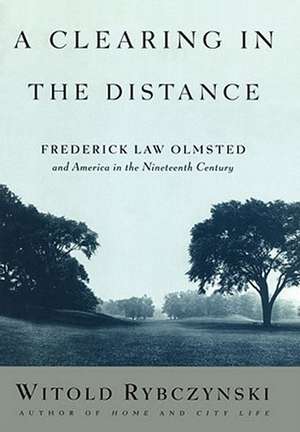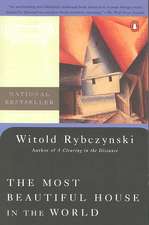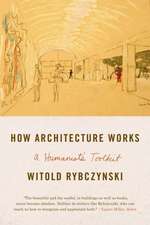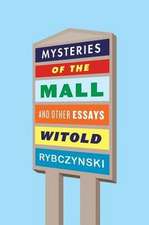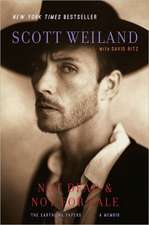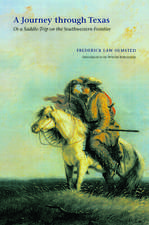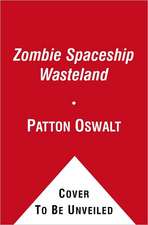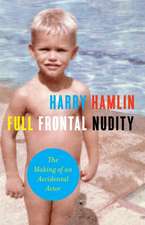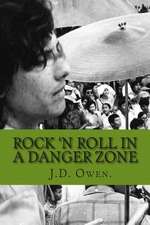A Clearing in the Distance
Autor Witold Rybczynskien Limba Engleză Hardback – 7 iun 1999
Vezi toate premiile Carte premiată
We know Olmsted through the physical legacy of his stunning landscapes -- among them, New York's Central Park, California's Stanford University campus, Boston's Back Bay Fens, Illinois's Riverside community, Asheville's Biltmore Estate, and Louisville's park system. He was a landscape architect before that profession was founded, designed the first large suburban community in the United States, foresaw the need for national parks, and devised one of the country's first regional plans.
Olmsted's contemporaries knew a man of even more extraordinarily diverse talents. Born in 1822, he traveled to China on a merchant ship at the age of twenty-one. He cofounded "The Nation" magazine and was an early voice against slavery. He wrote books about the South and about his exploration of the Texas frontier. He managed California's largest gold mine and, during the Civil War, served as general secretary to the United States Sanitary Commission, the precursor of the Red Cross.
Olmsted was both ruthlessly pragmatic and a visionary. To create Central Park, he managed thousands of employees who moved millions of cubic yards of stone and earth and planted over 300,000 trees and shrubs. In laying it out, "we determined to think of no results to be realized in less than forty years," he told his son, Rick. "I have all my life been considering distant effects and always sacrificing immediate success and applause to that of the future." To this day, Olmsted's ideas about people, nature, and society are expressed across the nation -- above all, in his parks, so essential to the civilized life of our cities.
Rybczynski's passion for his subject and his understanding of Olmsted's immense complexity and accomplishments make this book a triumphant work. In "A Clearing in the Distance, " the story of a great nineteenth-century American becomes an intellectual adventure.
| Toate formatele și edițiile | Preț | Express |
|---|---|---|
| Paperback (1) | 114.42 lei 3-5 săpt. | |
| Scribner – 30 iun 2000 | 114.42 lei 3-5 săpt. | |
| Hardback (1) | 419.81 lei 3-5 săpt. | |
| Scribner – 7 iun 1999 | 419.81 lei 3-5 săpt. |
Preț: 419.81 lei
Nou
Puncte Express: 630
Preț estimativ în valută:
80.34€ • 83.24$ • 67.05£
80.34€ • 83.24$ • 67.05£
Carte disponibilă
Livrare economică 01-15 martie
Preluare comenzi: 021 569.72.76
Specificații
ISBN-13: 9780684824635
ISBN-10: 0684824639
Pagini: 480
Dimensiuni: 161 x 235 x 39 mm
Greutate: 0.88 kg
Editura: Scribner
Locul publicării:New York, NY
ISBN-10: 0684824639
Pagini: 480
Dimensiuni: 161 x 235 x 39 mm
Greutate: 0.88 kg
Editura: Scribner
Locul publicării:New York, NY
Recenzii
Frances FitzGerald A sensitive, engrossing biography of Frederick Law Olmsted: one of the most evocative and multifaceted men of the American nineteenth century, whose works still live and breathe among us.
Suzannah Lessard "The New York Times Book Review" Excellent...thorough and respectful, yet easeful in a way that is reminiscent of Olmsted himself.
Stanley Weintraub "The Wall Street Journal" Mr. Rybczynski meshes what is close to a history of urban landscape architecture in America in the nineteenth century with a life of Olmsted. By doing so, he has produced a biography that communicates, with feeling, the ups and downs of Olmsted's career as well as of the profession he helped to invent....A book that defines and evokes Olmsted as an American original.
Suzannah Lessard "The New York Times Book Review" Excellent...thorough and respectful, yet easeful in a way that is reminiscent of Olmsted himself.
Stanley Weintraub "The Wall Street Journal" Mr. Rybczynski meshes what is close to a history of urban landscape architecture in America in the nineteenth century with a life of Olmsted. By doing so, he has produced a biography that communicates, with feeling, the ups and downs of Olmsted's career as well as of the profession he helped to invent....A book that defines and evokes Olmsted as an American original.
Descriere
In a brilliant collaboration between writer and subject, the bestselling author of "Home" and "City Life" illuminates Frederick Law Olmsted's role as a major cultural figure and a man at the epicenter of nineteenth-century American history.We know Olmsted through the physical legacy of his stunning landscapes -- among them, New York's Central Park, California's Stanford University campus, Boston's Back Bay Fens, Illinois's Riverside community, Asheville's Biltmore Estate, and Louisville's park system. He was a landscape architect before that profession was founded, designed the first large suburban community in the United States, foresaw the need for national parks, and devised one of the country's first regional plans.
Olmsted's contemporaries knew a man of even more extraordinarily diverse talents. Born in 1822, he traveled to China on a merchant ship at the age of twenty-one. He cofounded "The Nation" magazine and was an early voice against slavery. He wrote books about the South and about his exploration of the Texas frontier. He managed California's largest gold mine and, during the Civil War, served as general secretary to the United States Sanitary Commission, the precursor of the Red Cross.
Olmsted was both ruthlessly pragmatic and a visionary. To create Central Park, he managed thousands of employees who moved millions of cubic yards of stone and earth and planted over 300,000 trees and shrubs. In laying it out, "we determined to think of no results to be realized in less than forty years," he told his son, Rick. "I have all my life been considering distant effects and always sacrificing immediate success and applause to that of the future." To this day, Olmsted's ideas about people, nature, and society are expressed across the nation -- above all, in his parks, so essential to the civilized life of our cities.
Rybczynski's passion for his subject and his understanding of Olmsted's immense complexity and accomplishments make this book a triumphant work. In "A Clearing in the Distance, " the story of a great nineteenth-century American becomes an intellectual adventure.
Olmsted's contemporaries knew a man of even more extraordinarily diverse talents. Born in 1822, he traveled to China on a merchant ship at the age of twenty-one. He cofounded "The Nation" magazine and was an early voice against slavery. He wrote books about the South and about his exploration of the Texas frontier. He managed California's largest gold mine and, during the Civil War, served as general secretary to the United States Sanitary Commission, the precursor of the Red Cross.
Olmsted was both ruthlessly pragmatic and a visionary. To create Central Park, he managed thousands of employees who moved millions of cubic yards of stone and earth and planted over 300,000 trees and shrubs. In laying it out, "we determined to think of no results to be realized in less than forty years," he told his son, Rick. "I have all my life been considering distant effects and always sacrificing immediate success and applause to that of the future." To this day, Olmsted's ideas about people, nature, and society are expressed across the nation -- above all, in his parks, so essential to the civilized life of our cities.
Rybczynski's passion for his subject and his understanding of Olmsted's immense complexity and accomplishments make this book a triumphant work. In "A Clearing in the Distance, " the story of a great nineteenth-century American becomes an intellectual adventure.
Notă biografică
Cuprins
CONTENTS
Foreword
Schemes
1. "Tough as nails"
2. Frederick goes to school
3. Hartford
4. "I have no objection"
5. New York
6. A year before the mast
7. Friends
8. Farming
9. More Farming
10. A walking tour in the old country
Jostling and Being Jostled
11. Mr. Downing's magazine
12. Olmsted falls in love and finishes his book
13. Charley Brace intervenes
14. Yeoman
15. A traveling companion
16. The Texas settlers
17. Yeoman makes a decision
18. "Much the best Mag. in the world"
19. Abroad
Hitting Heads
20. A change in fortune
21. The Colonel meets his match
22. Mr. Vaux
23. A brilliant solution
24. A promotion
25. Frederick and Mary
26. Comptroller Green
27. King Cotton
28. A good big work
29. Yeoman's war
30. "Six months more pretty certainly"
31. A letter from Dana
32. Never happier
33. Olmsted shortens sail
34. A heavy sort of book
35. Calvert Vaux doesn't take no for an answer
36. Loose ends
A Magnificent Opening
37. Olmsted and Vaux plan a perfect park
38. Metropolitan
39. A stopover in Buffalo
40. Thirty-nine thousand trees
41. Best-laid plans
42. Henry Hobson Richardson
43. Olmsted's dilemma
44. Alone
45. "More interesting than nature"
46. Olmsted in demand
47. "I shall be free from it on the Ist of January"
Standing First
48. An arduous convalescence
49. Fairstead
50. The character of his business
51. The sixth park
52. Olmsted meets the Governor
53. Olmsted and Vaux, together again
54. "Make a small pleasure ground and gardens"
55. Olmsted drives hard
56. The fourth muse
57. Dear Rick
58. Sunset
Olmsted's Distant Effects
Distant Effects
A Selected List of Olmsted Projects
Acknowledgments
Notes
Index
Illustration and Photograph Credits
Foreword
Schemes
1. "Tough as nails"
2. Frederick goes to school
3. Hartford
4. "I have no objection"
5. New York
6. A year before the mast
7. Friends
8. Farming
9. More Farming
10. A walking tour in the old country
Jostling and Being Jostled
11. Mr. Downing's magazine
12. Olmsted falls in love and finishes his book
13. Charley Brace intervenes
14. Yeoman
15. A traveling companion
16. The Texas settlers
17. Yeoman makes a decision
18. "Much the best Mag. in the world"
19. Abroad
Hitting Heads
20. A change in fortune
21. The Colonel meets his match
22. Mr. Vaux
23. A brilliant solution
24. A promotion
25. Frederick and Mary
26. Comptroller Green
27. King Cotton
28. A good big work
29. Yeoman's war
30. "Six months more pretty certainly"
31. A letter from Dana
32. Never happier
33. Olmsted shortens sail
34. A heavy sort of book
35. Calvert Vaux doesn't take no for an answer
36. Loose ends
A Magnificent Opening
37. Olmsted and Vaux plan a perfect park
38. Metropolitan
39. A stopover in Buffalo
40. Thirty-nine thousand trees
41. Best-laid plans
42. Henry Hobson Richardson
43. Olmsted's dilemma
44. Alone
45. "More interesting than nature"
46. Olmsted in demand
47. "I shall be free from it on the Ist of January"
Standing First
48. An arduous convalescence
49. Fairstead
50. The character of his business
51. The sixth park
52. Olmsted meets the Governor
53. Olmsted and Vaux, together again
54. "Make a small pleasure ground and gardens"
55. Olmsted drives hard
56. The fourth muse
57. Dear Rick
58. Sunset
Olmsted's Distant Effects
Distant Effects
A Selected List of Olmsted Projects
Acknowledgments
Notes
Index
Illustration and Photograph Credits
Premii
- Christopher Awards Winner, 2000
- Lukas Prize Project Winner, 2000
- ALA Notable Books Winner, 2000
